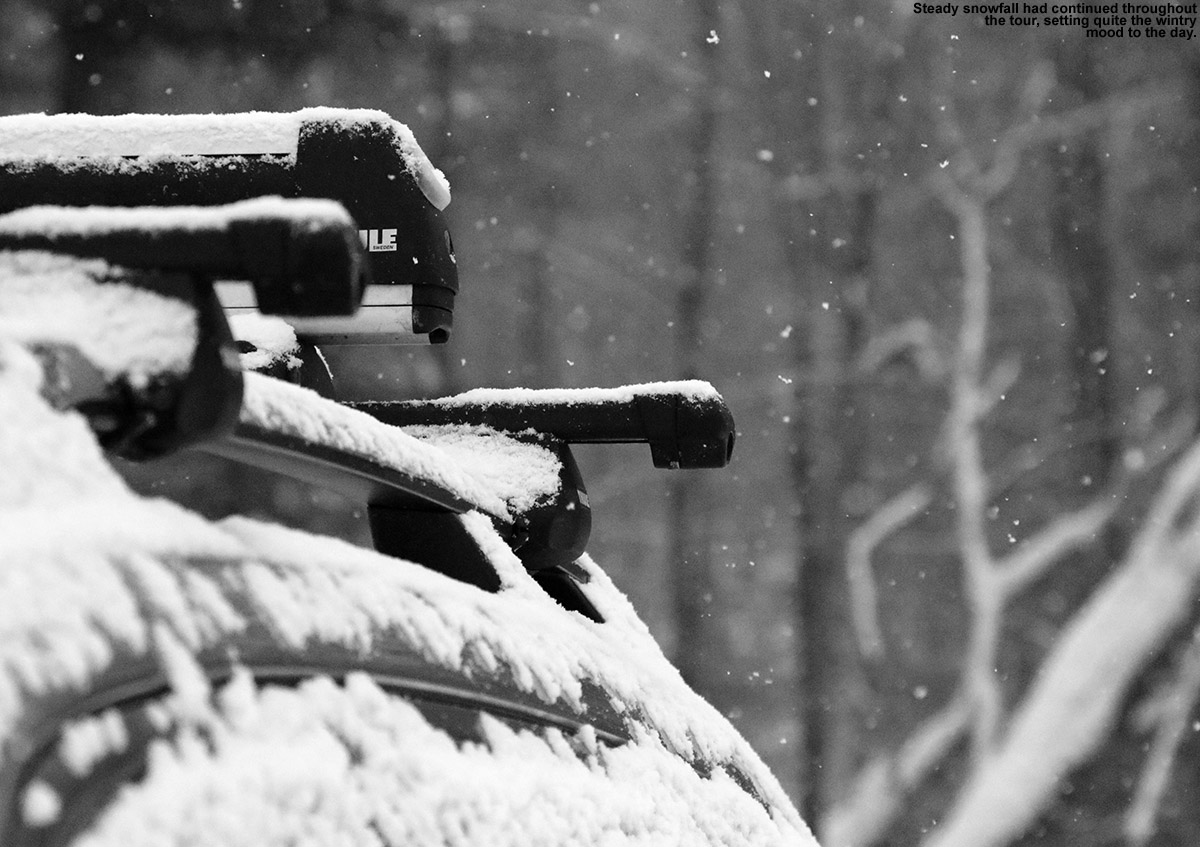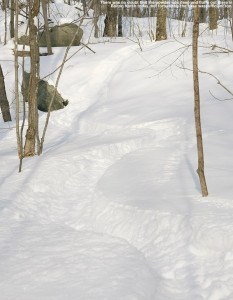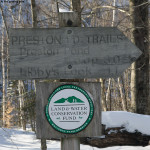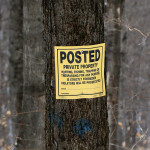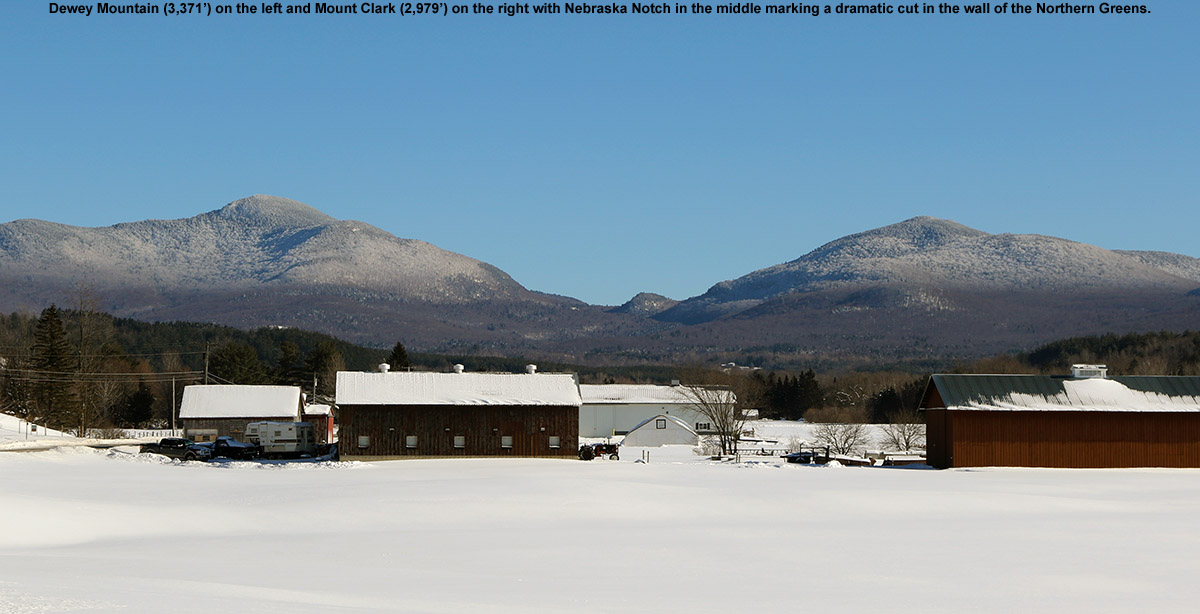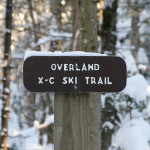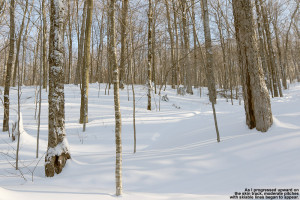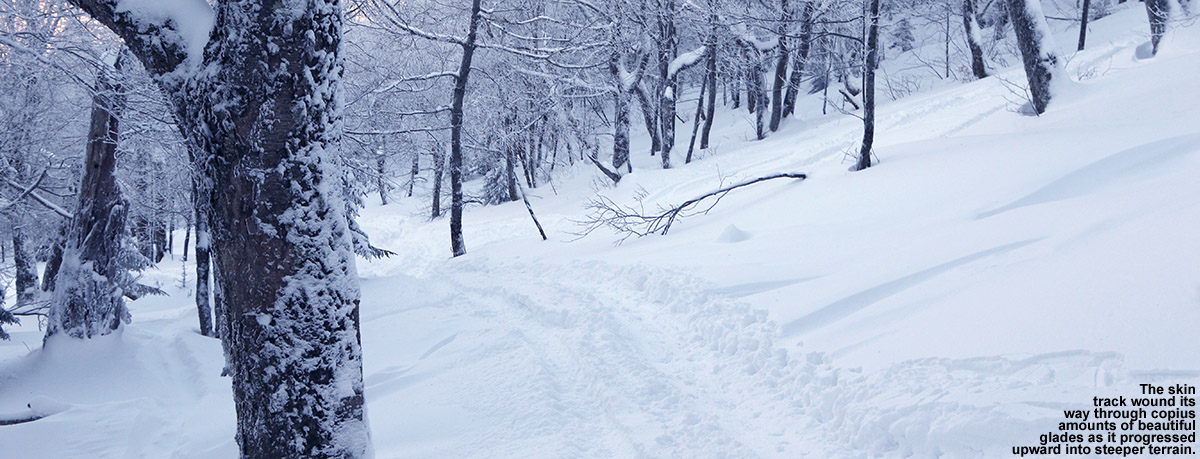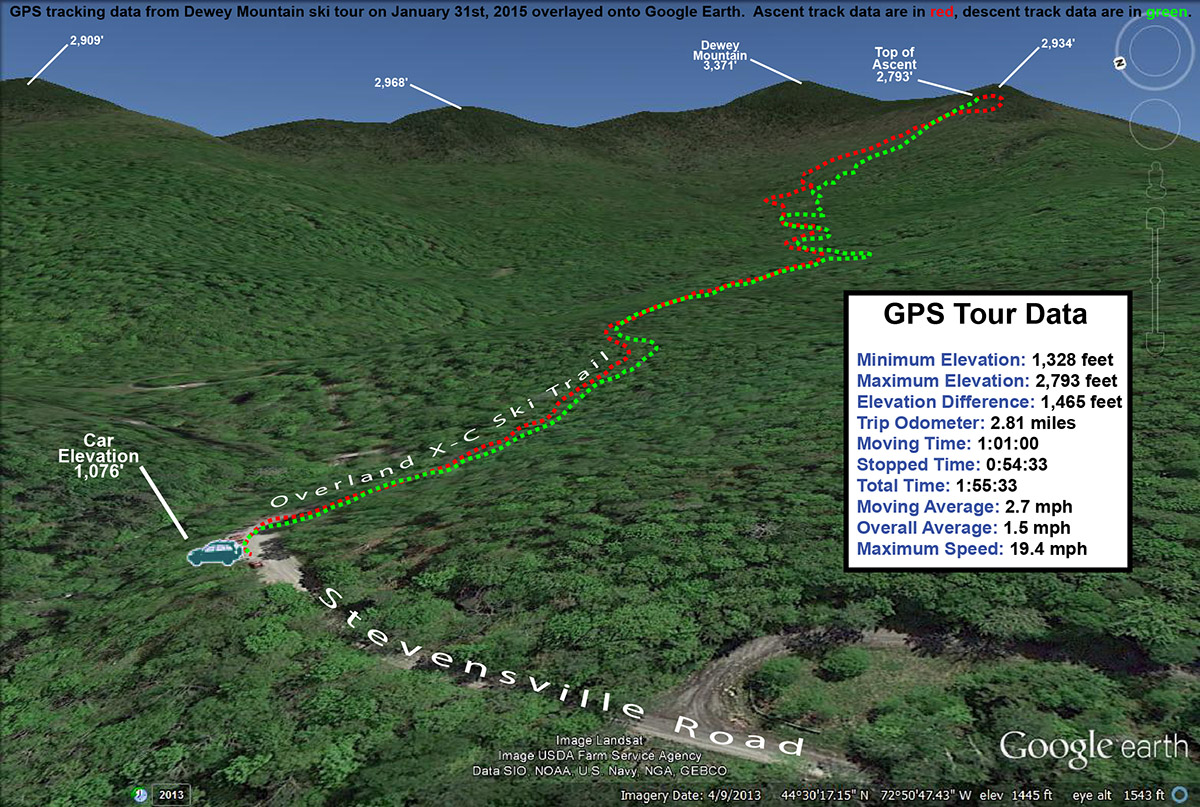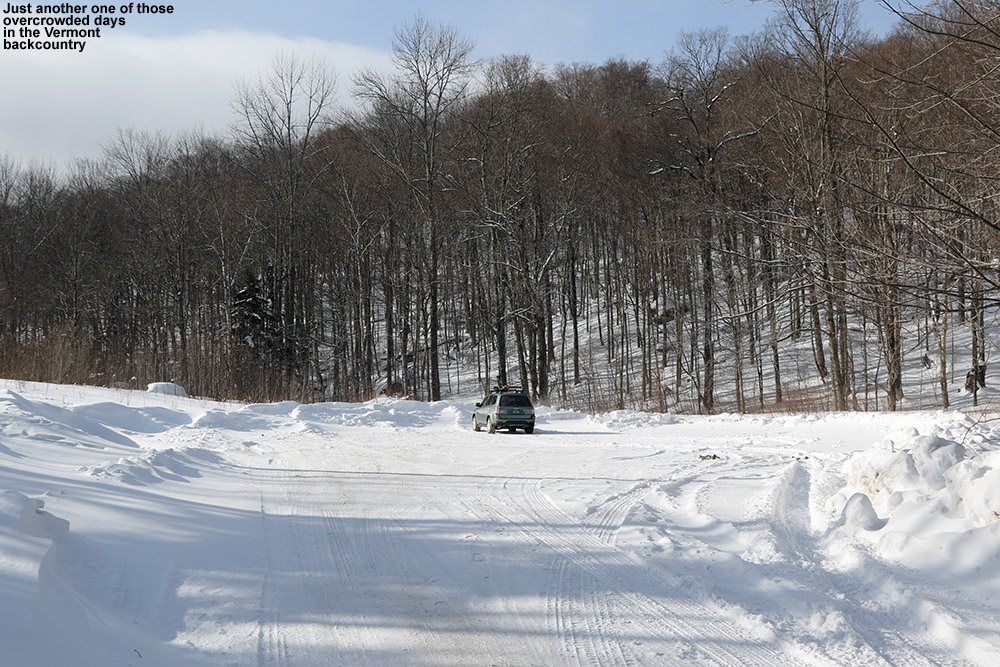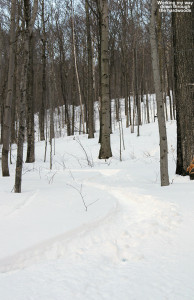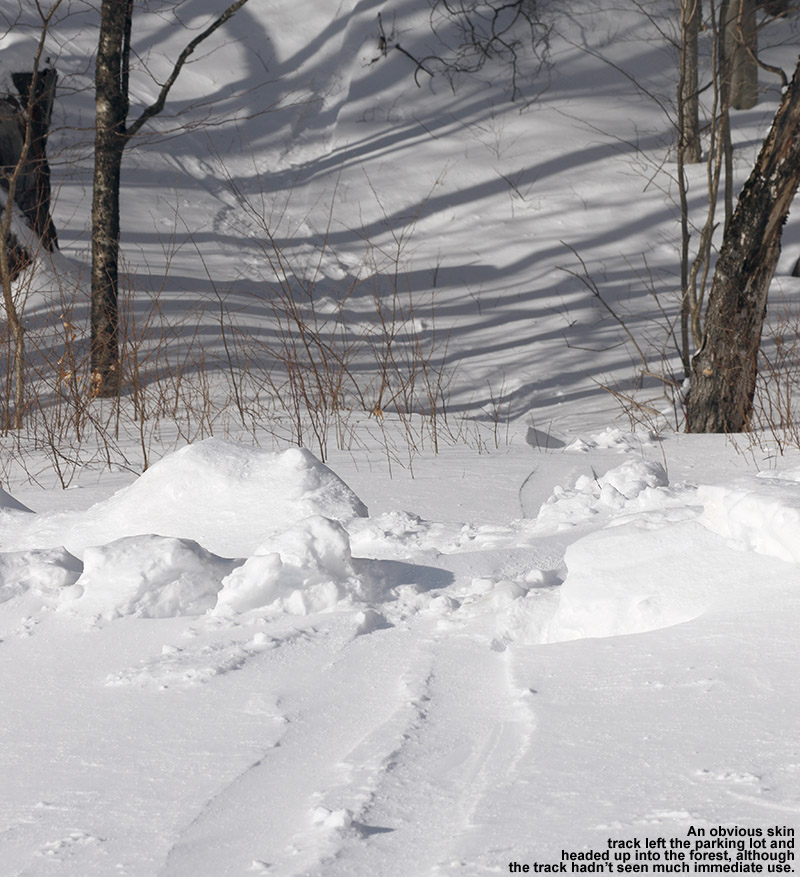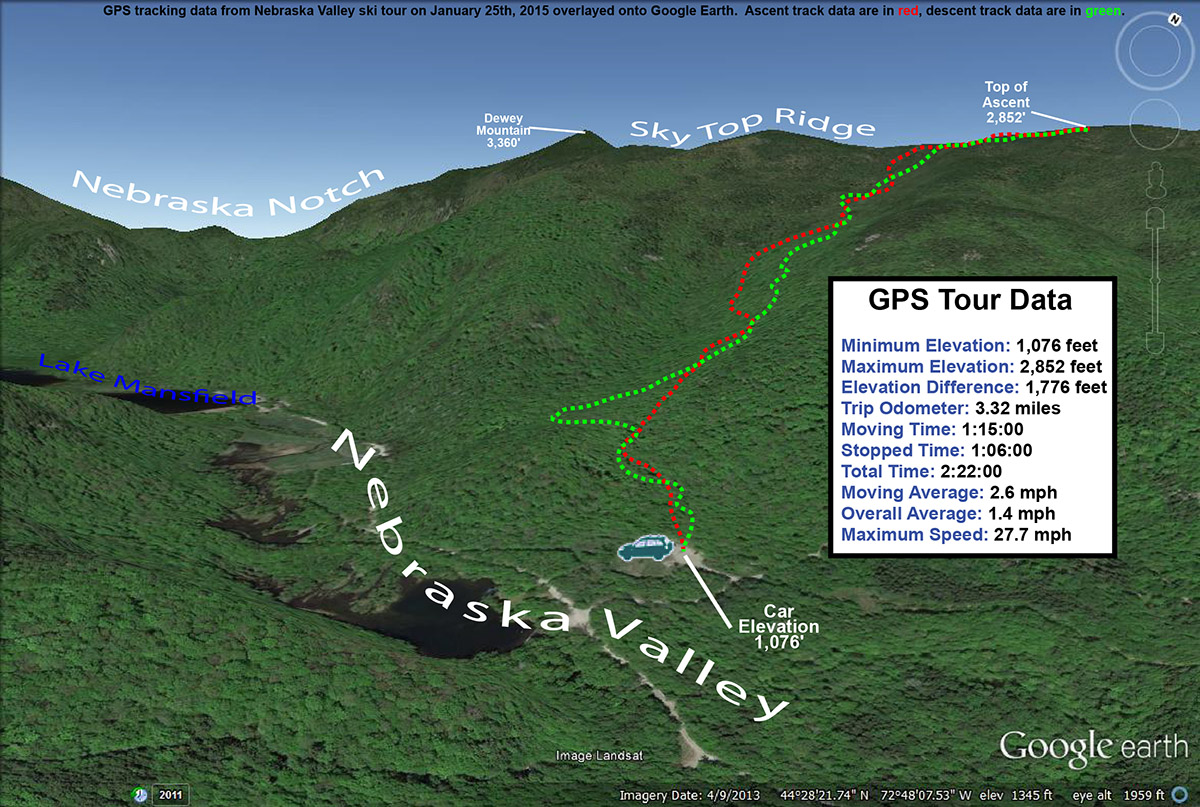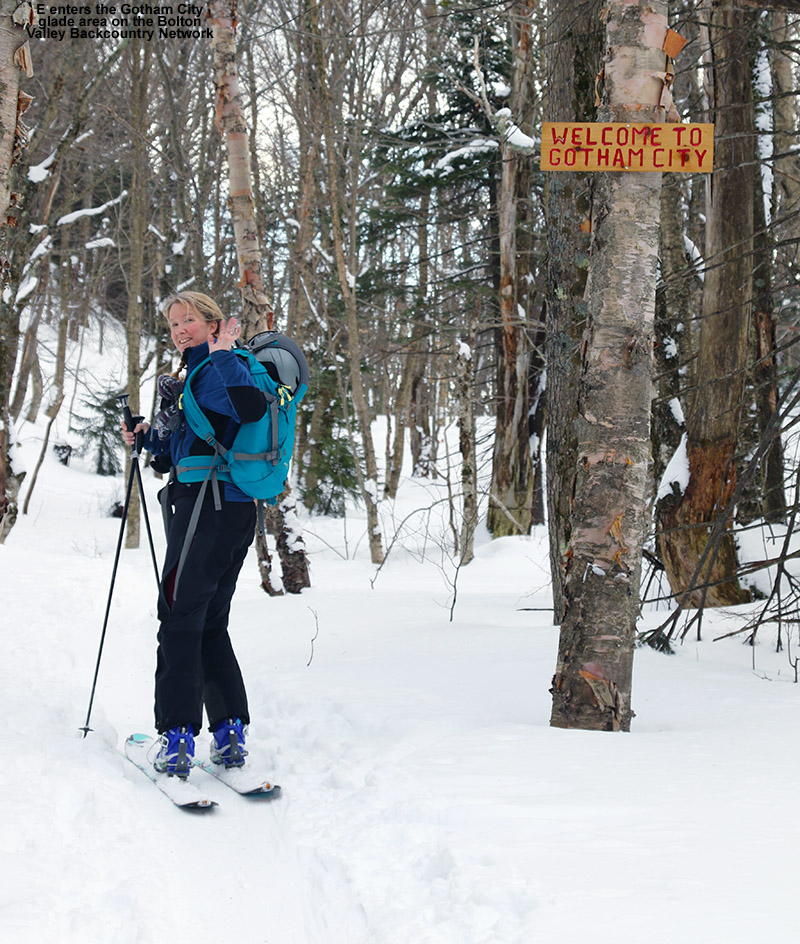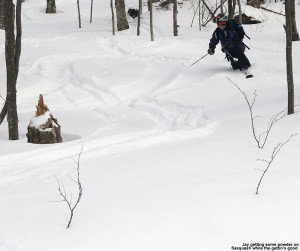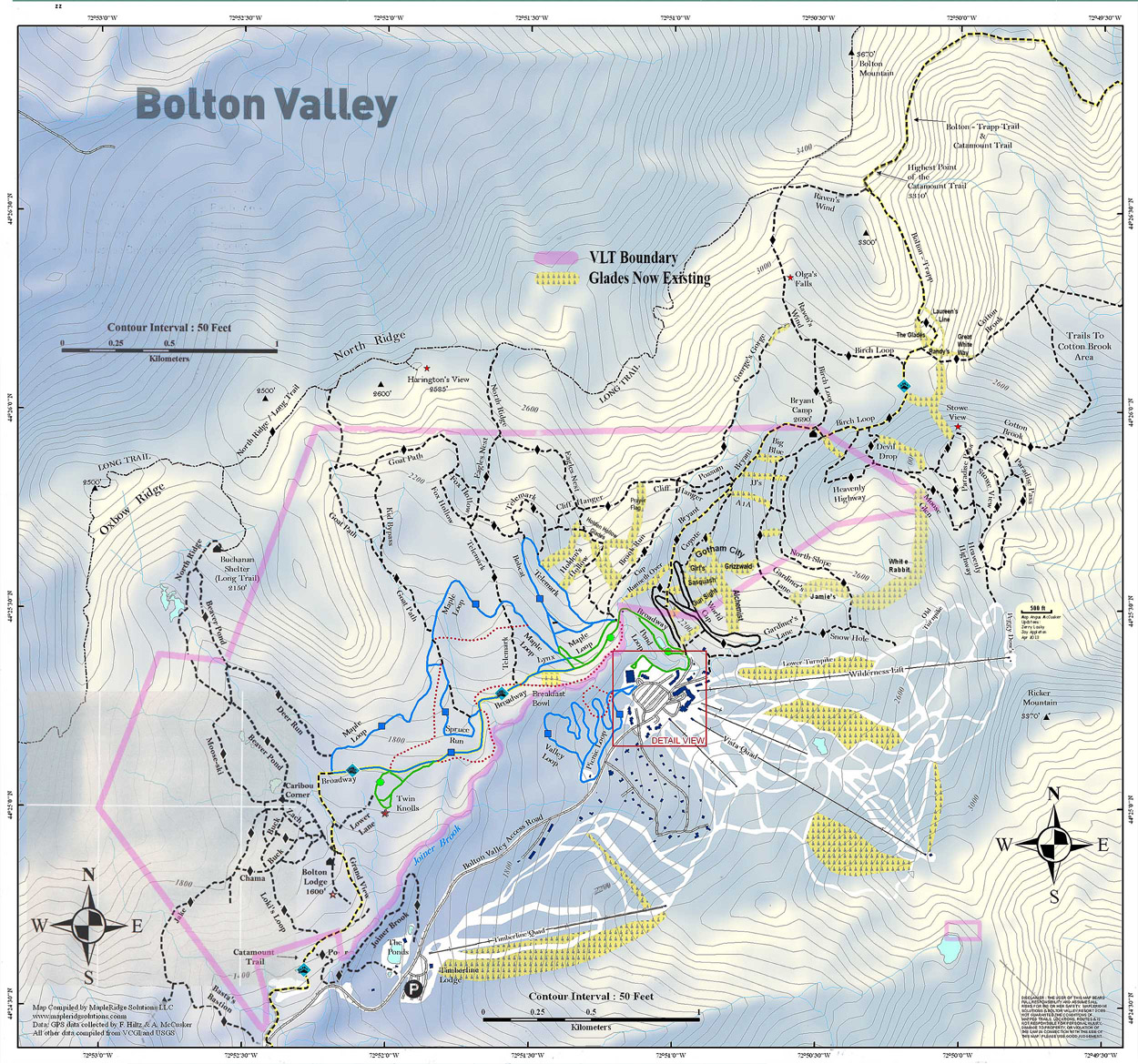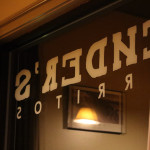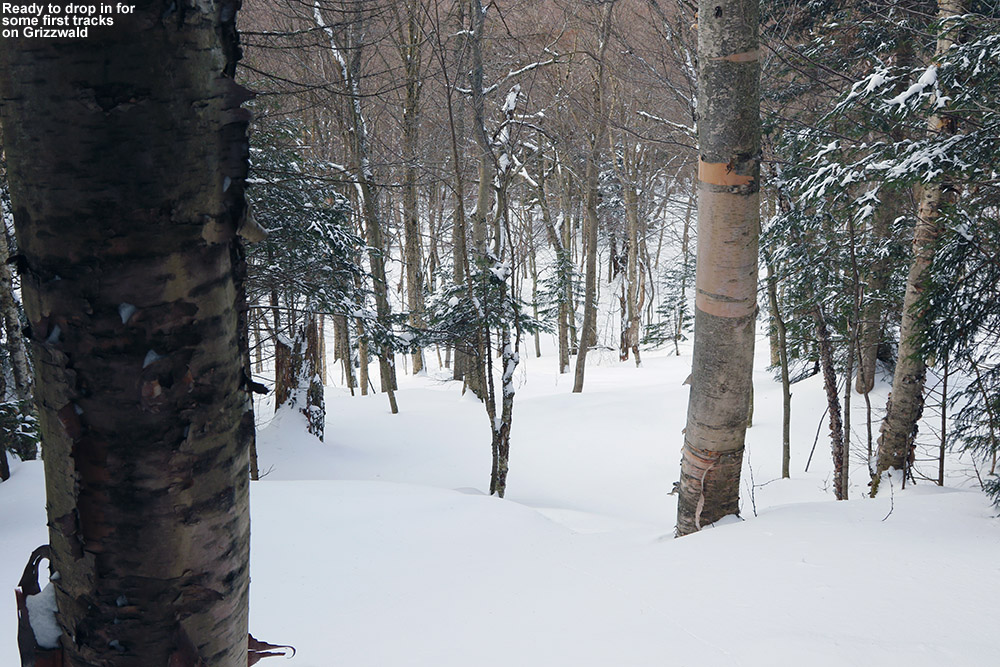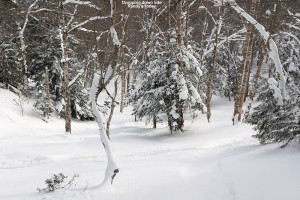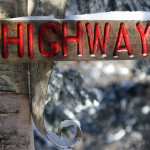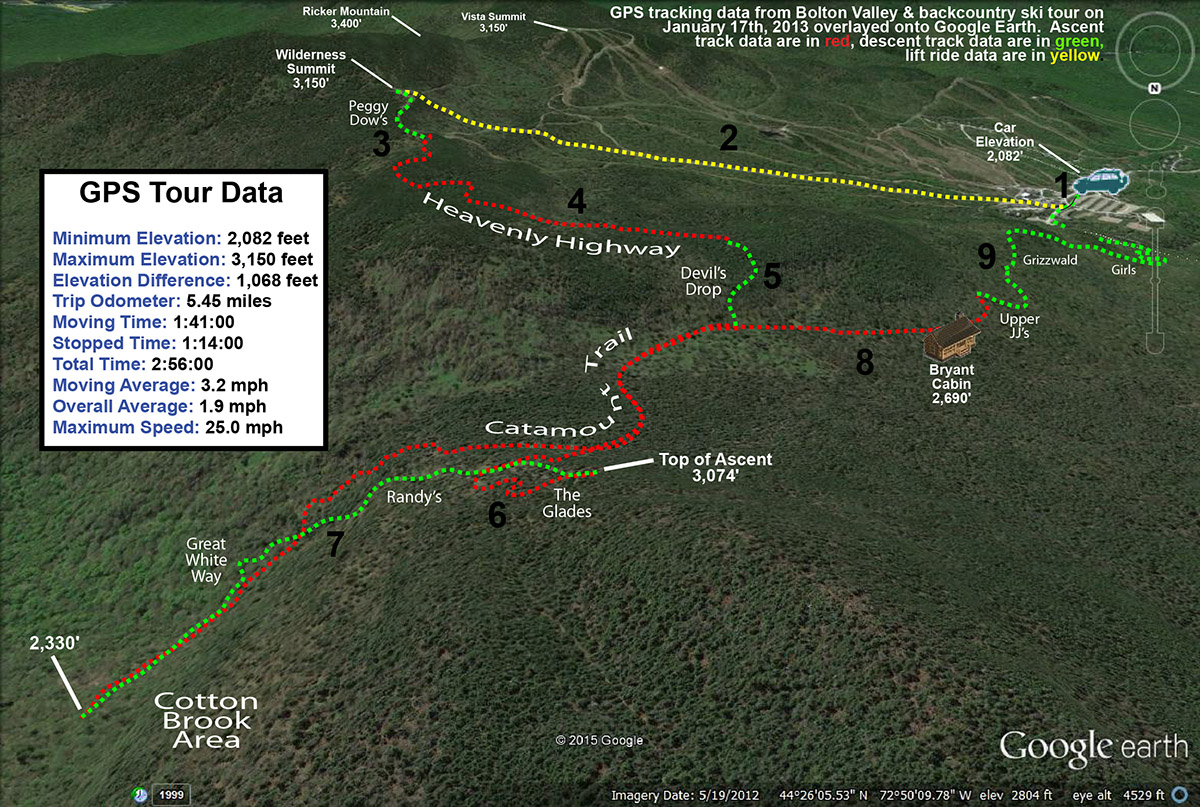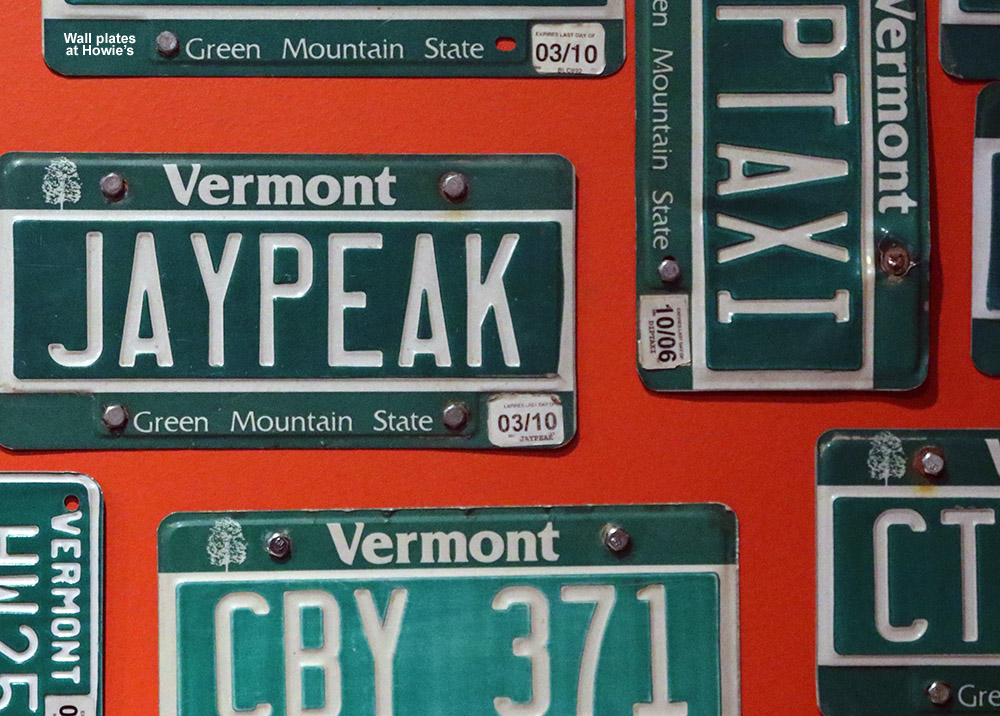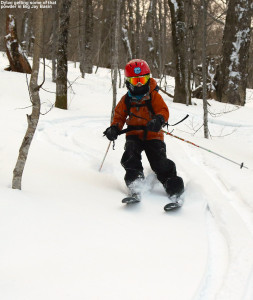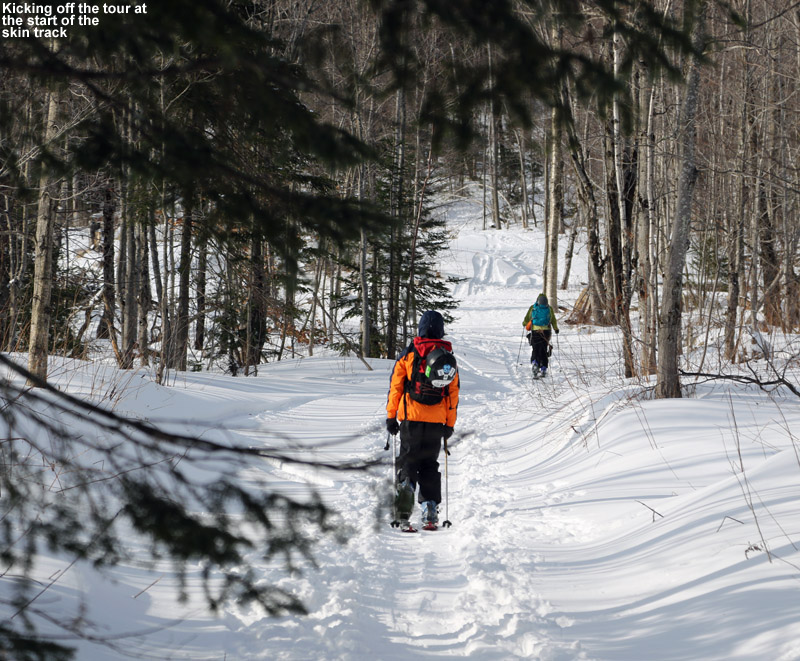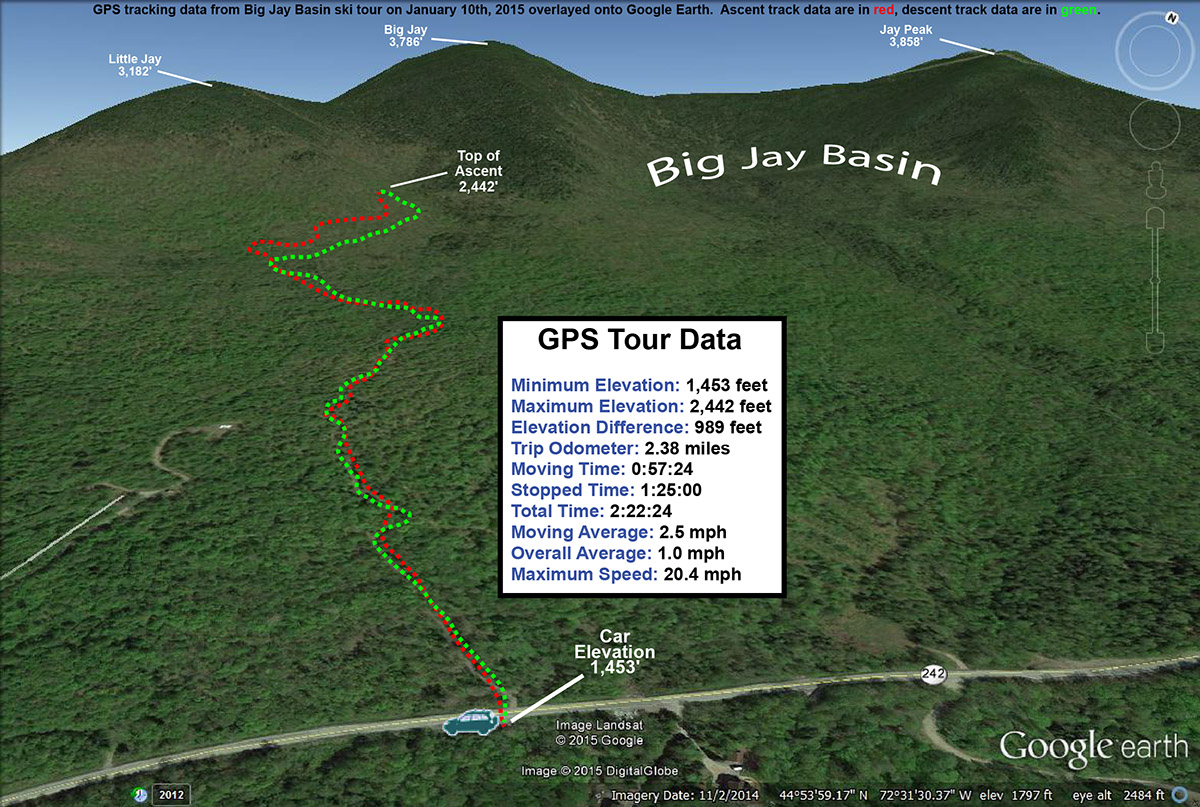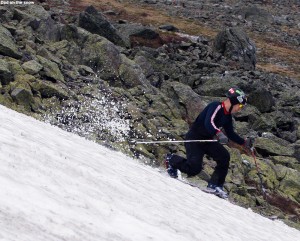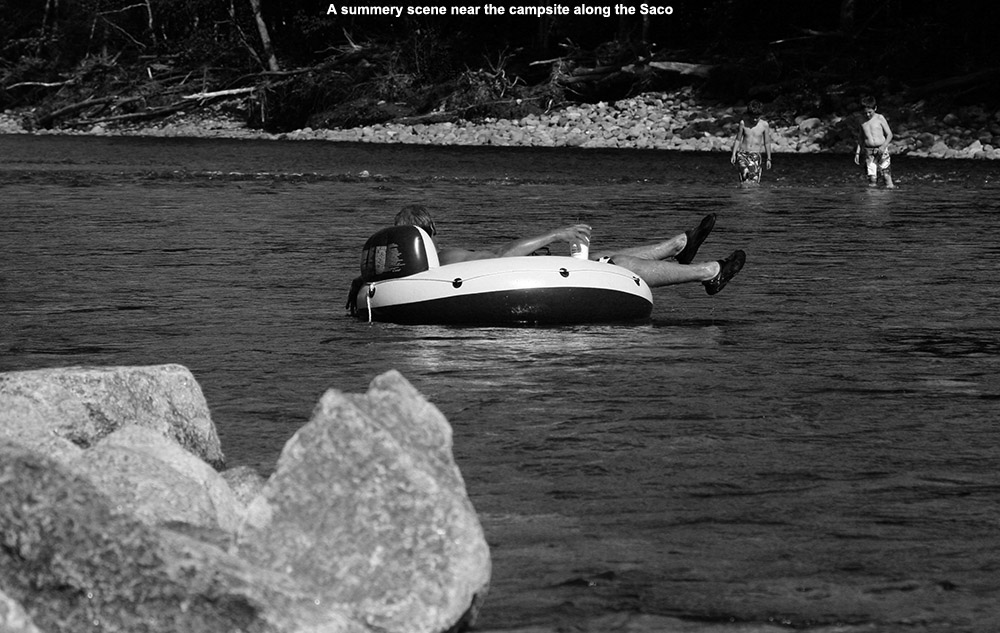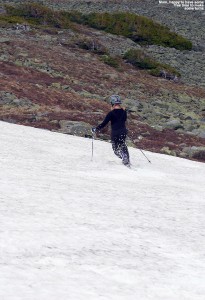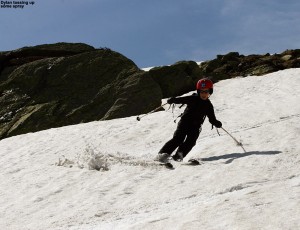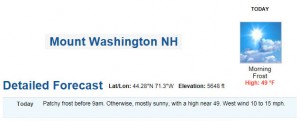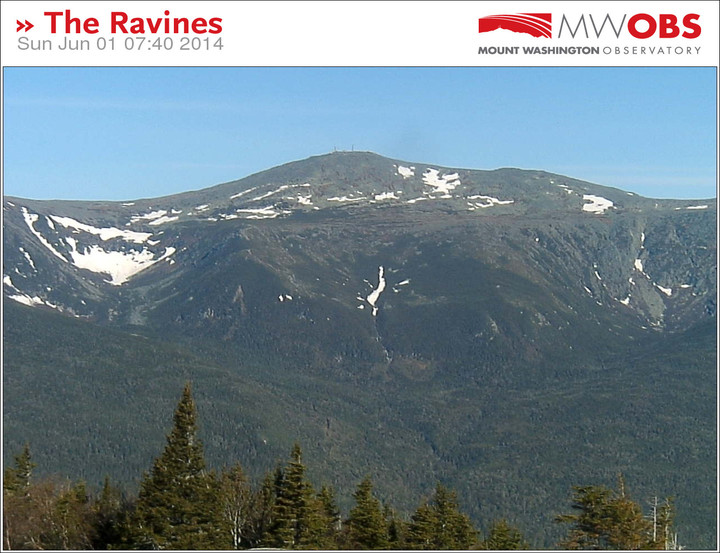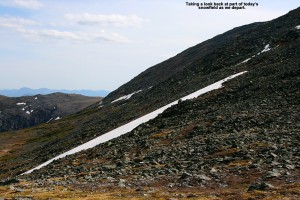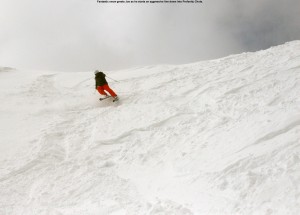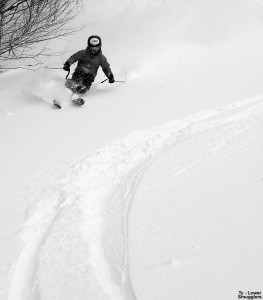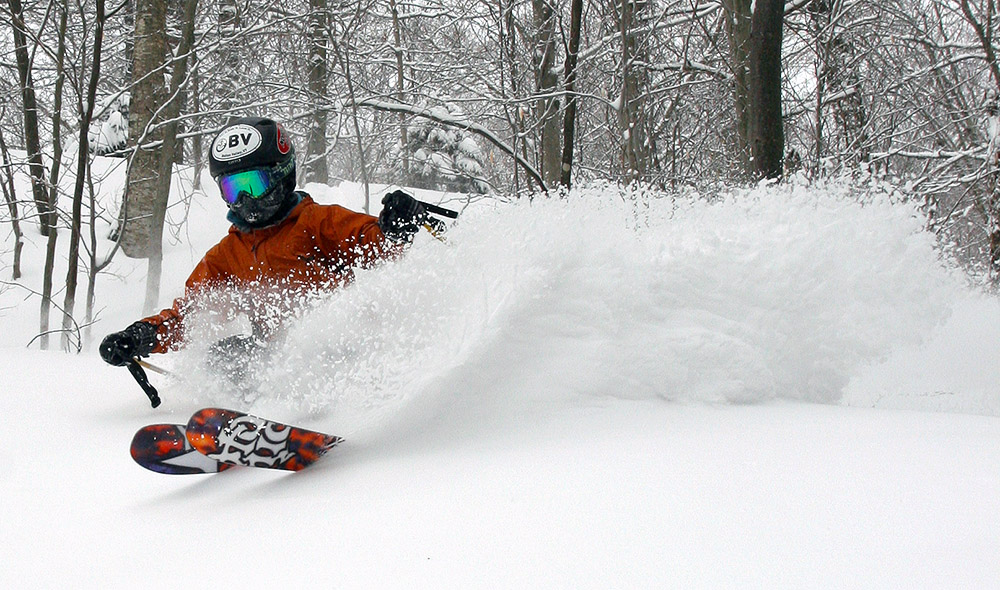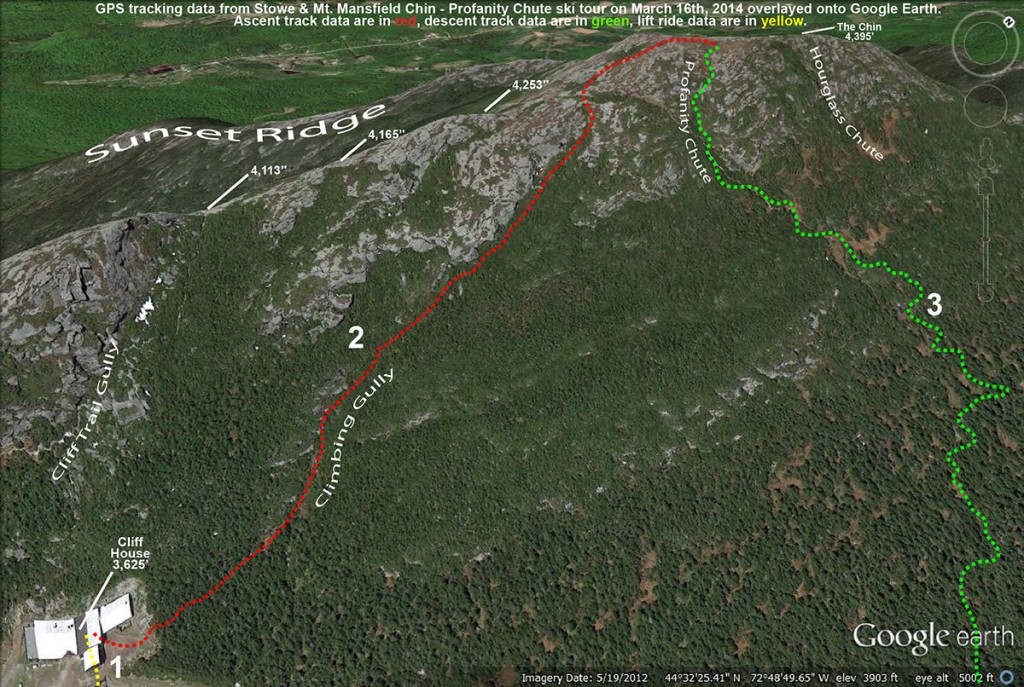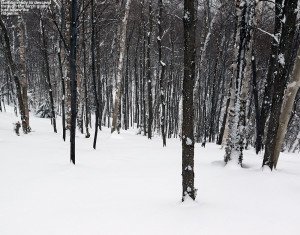
Last weekend we got out of the arctic chill for a bit, and since Winter Storm Marcus delivered 1 to 2 feet of snow to the Vermont ski resorts, we had some great lift-served powder skiing at Bolton Valley and Stowe. We haven’t had too much additional snow in the past week though, with just a midweek Alberta Clipper system dropping about a half foot at the local ski areas. The forecast was actually for some pretty reasonable temperatures today, approaching 20 F at our house in the valley, but with only modest snow in the past couple days, and the fact that it was a big holiday ski weekend, I decided to get back out into the backcountry. Today my goal was to check out the west face of Robbins Mountain in the Robbins Mountain Wildlife Management Area (RMWMA). In the past I’ve done ski tours on both the north and east faces of the mountain, but this would be my first time on the west side. A quick look at maps and literature available from the Vermont Fish and Wildlife Department suggested that reasonable access to the area could be gained via the Chittenden County Fish & Game Club parking area off a West White Hill in Richmond.
“Even down at that elevation, the snowpack was running at roughly 20″ on the level, and starting from the fluffy powder on top, there were gradually denser layers as you went down.”
We’re currently under the influence of Winter Storm Neptune, and although the snow has generally been light here in Northern Vermont, it’s still putting down a fresh coat of powder on the snowpack and generally keeping things quite wintry. Light snow from the morning had tapered down a bit as I headed off in the afternoon toward Richmond, and I cruised westward with the car thermometer showing temperatures generally in the mid to upper teens F. Although I wasn’t familiar with the location of the Chittenden County Fish & Game Club parking area, I’d plugged a nearby address into the car’s GPS, and once I got close, I found the entry to the game club well signed. The road was nicely maintained, and in the parking area I found a couple of other cars there that belonged to people who were using the shooting range. Beyond that initial parking area, the road was plowed for another couple hundred feet, but the plowing abruptly stopped so the parking near the shooting range ended up being the best option for parking the car to start the tour.
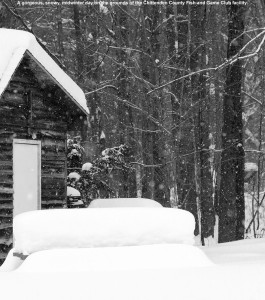
As I geared up, the snowfall began to intensify and the flakes became larger, so the storm was definitely on an uptick. Occasionally I’d hear the sound of gunfire coming from the range, and it was pretty loud since I was only 50 feet away or so. I wasn’t exactly sure where to go to start my tour, but I certainly wasn’t heading southward anywhere near the shooting range, and with Robbins Mountain looming off to my east, the partially plowed road that headed in that direction seemed like the logical choice. I’d initially had some concerns about the snowpack in the lower elevations of Robbins Mountain, since the parking area is at an elevation of only 750′, but those concerns were allayed as soon as I started skinning along and took a few depth measurements. Even down at that elevation, the snowpack was running at roughly 20″ on the level, and starting from the fluffy powder on top, there were gradually denser layers as you went down. So indeed the snowpack there at the base is just about the same as what we’ve got at our house at 500′ in the Winooski Valley, and since the snow depth was only going to increase with elevation, I knew there wouldn’t be any problems with snow coverage.
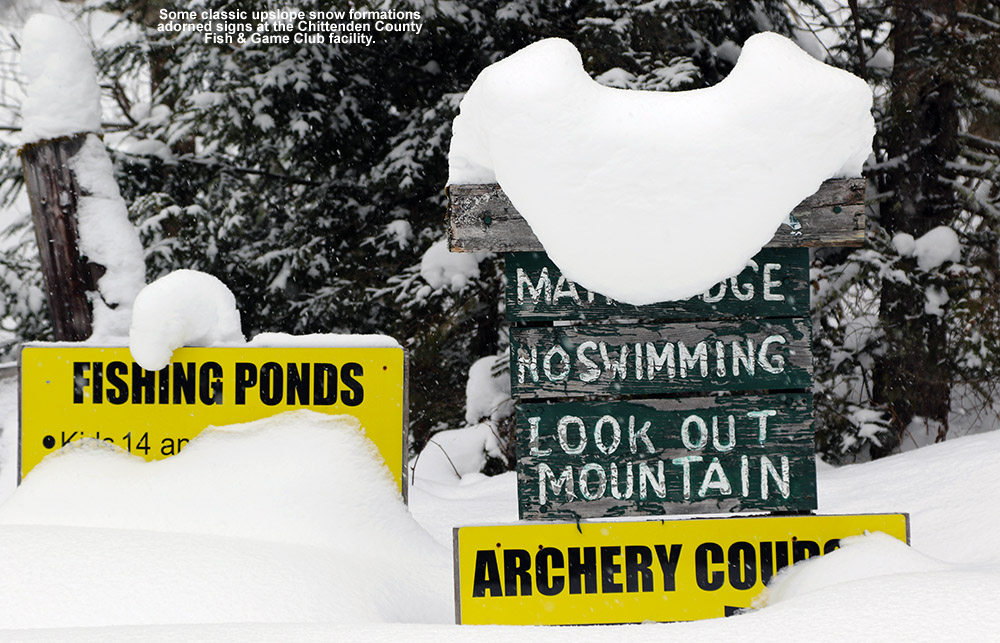
“…when I later saw how deep the snow was and how steep this vehicle could ascend despite such deep snow, it had to be something with tracks on it.”
As I followed the plowed road I found myself skinning through some of the fish and game club’s facilities, noting the deep stacks of snow that sat atop everything, and I worked my way toward what seemed to be a gate at the far end of the complex. With the temperature near 20 F, it was feeling downright balmy compared to some of the ski tours I’ve done in the past few weeks, so it was really a gorgeous midwinter day. At the gate there was an opening off to the side for foot traffic, and I saw what appeared to be one track from someone on snowshoes. Beyond the gate I was on what appeared to be a service road, and it had seen some interesting traffic. The tracks I saw appeared to come from a wide vehicle, and at that point it could have been a jeep, but when I later saw how deep the snow was and how steep this vehicle could ascend despite such deep snow, it had to be something with tracks on it. Whatever it was, it gave me a semi-packed track to use for skinning, and that helped a lot because it would have been quite a slog through that deep powder without it.
“…the spacing of the trees was so good, and the snow surface so consistently smooth and unadulterated by anything below, that you could have enough confidence to make whatever turns you wanted.”
It was pleasant skinning along the service road with light snow falling and no wind, and after about a half mile the service road forked. The right fork seemed to continue contouring along and slightly up to the south, and it actually had a set of ski tracks on it. The other fork interested me much more though, since it headed east toward the higher elevations, so I opted for that route. Following that fork, the road meandered generally to the east, with switchbacks at times to keep the pitch moderate. I was actually amazed at some of the pitches that the vehicle making those tracks had climbed, so it must really be built for dealing with deep snow. At around 1,700′ the vehicle tracks finally stopped, and a single track continued on. The track was so old and buried that it was hard to tell what it was, but it certainly could have been an old skin track.
“The trees were so open with respect to underbrush that I wondered if the area was part of the successional cuts that are made in the area as part of the wildlife management.”
Not long after the single track began, the road took a sharp left and headed north. A quick look at the overall terrain and vegetation in the area made it obvious that that wasn’t the way for me to go. The underbrush was denser in that direction, and the terrain looked like it would head into more ledges. My thoughts were drawn much more to the south, since on the ascent I’d seen what appeared to be some excellent open terrain a few hundred feet off in that direction. Coincidentally, or more likely not, the single track that I was on seemed to head in just that direction. It wasn’t obvious that it was a skin track, and it actually seemed more like a game track, but it went exactly where I wanted to go, so I followed it. Within a few moments I was into the open trees that I’d seen, and boy did that look like some good ski terrain. The trees were so open with respect to underbrush that I wondered if the area was part of the successional cuts that are made in the area as part of the wildlife management. The terrain wasn’t overly steep, but it looked like it would offer up some really nice turns, especially in conjunction with the fantastic snow that was underfoot. I continued to follow the track up through the open trees, and with the path the track took, it really could have been made by a skier. It seemed to skirt right along the top of some of the more open sections of woods, seeming to pick the perfect line to get to the apex of that terrain. A few hundred feet above me I could see where the terrain began to steepen dramatically, and based on my elevation I knew that was the final headwall leading up to the ridge extending south from Robbins Mountain. I expected that the trees would get to tight and or brushy once I hit the headwall, because that’s sometimes what happens as the composition of the forest changes, so I was getting set to find a good spot for my transition as soon as I reached the top of the open trees below.
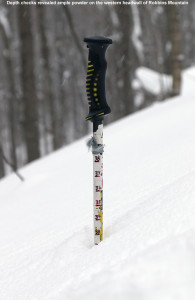
When I finally approached the headwall though, I had to reconsider my initial plans of not skiing it; what I saw above me was just too good to pass up. The trees continued to be quite open for another hundred vertical feet before ledges took over, so I had to head up a bit more. That terrain would make for a great start to the ski run. The ascent track I’d been following didn’t go that way, so I had to break trail, and it was somewhat slow going with the pitch of that slope and the depth of the snow. I clicked up my rarely used, tall heel lifts, and kept at it. The pitch was easily 25 to 30 degrees, and though I made switchbacks it was a slog through that powder. I did some depth checks and the surface snow was pushing three feet of depth, so even with the floatation of 115 mm fat skis I was down a good distance in that snow. I thought I’d catch another hundred feet of vertical or so out of that ascent, and be just below the steep and ledge terrain of the headwall, but as I continued to ascent, a beautiful gully full of nicely spaced birches appeared to the southeast. It actually ascended all the way up to the ridgeline, slicing to the northeast through the ledges, and it was almost as if Mother Nature had made a passageway to permit skiing down from the ridgeline. I had to keep going because there was no way I was going to miss the chance to tag the ridgeline and ski that beautiful gully. So after a bit, or perhaps more, of additional work, I reached the ridgeline.
“Those turns through the birch glade and then the lower reaches of the headwall were deep and smooth, and you almost couldn’t ask for better snow.”
When I got to the ridgeline I had some flashbacks of my most recent trip to Robbins Mountain with James. It was nice up there though, with very little wind and good temperatures. I had some food, and switched over for the descent. My depth checks continued to reveal snow depths approaching three feet up there, so even on the steepest pitches there were no concerns about snow coverage. Those turns through the birch glade and then the lower reaches of the headwall were deep and smooth, and you almost couldn’t ask for better snow. The powder had an excellent density gradient, and you could cut into it as hard as you wanted. The only things to watch out for were obvious big logs, which you could easily see. I mixed it up with both Telemark and alpine turns, but the spacing of the trees was so good, and the snow surface so consistently smooth and unadulterated by anything below, that you could have enough confidence to make whatever turns you wanted. Below the headwall I got into the very open hardwoods, and the skiing was mellower, but oh so good. The coverage and general consistency of the snowpack, and the lack of (or perhaps buried nature of) underbrush means that you can just let the skis run and run and you’ll just keep finding that great ski terrain appears.
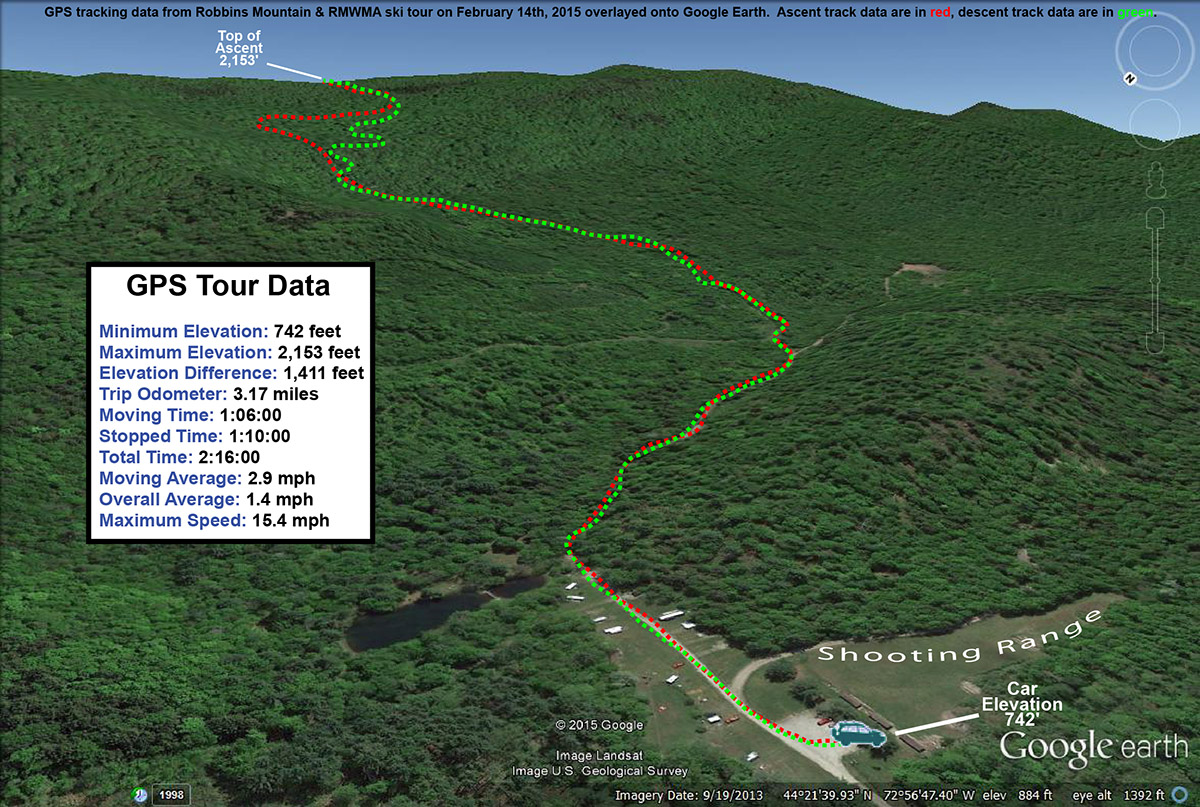
At roughly the 1,300′ elevation I finally merged my way back onto the service road and skin track, and from there on down I stuck close to the track. I still made occasional turns in the powder, but being near the track was really helpful as the pitch of the terrain lessened. Following the general area of the service road ensured an efficient runout and exit from the tour, because the powder out there right now is just too deep to keep up speed if you don’t have that necessary pitch. I was able to make a quick descent right back to the parking area thanks to the service road and my skin track. I’d say that a good way to cycle that terrain would be to head down to that 1,300′ level and catch the skin track back up, and then simply hit the runout at the end of the ski session. Surface snow depths of 6-12″ of powder would be fine for everything but the headwall area, and you could probably ski some additional mellow pitches if the snow was in that state. It’s really hard to complain about the current snowpack though, it so deep and soft that it’s hard to say enough about how well it skis. With good access and some great open terrain, I’d say that RMWMA zone is a nice option when the snowpack on the lower elevations of the west slopes is sufficient. When I got home I told E that it would be a good spot for her and the boys, so hopefully I’ll get them out there one of these days so that they can see what it’s like.
